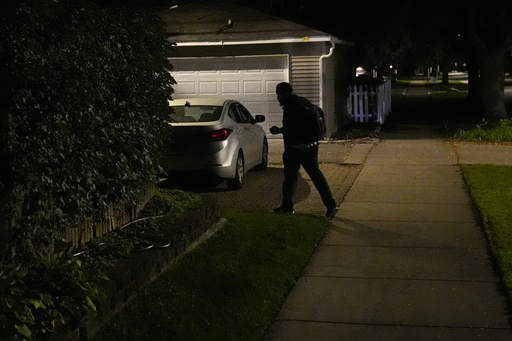CHICAGO — Ismael El-Amin was driving his daughter to school when a fortuitous encounter inspired him to create a new carpooling solution. During their commute across Chicago, his daughter recognized a classmate who was also on the road with her father as they traveled to a selective public school. As they shared the busy highway, the parents exchanged glances and realized that a network of parents could likely support each other in transporting their children. This realization led El-Amin to establish the Piggyback Network, a service designed for parents to arrange rides for their kids.
The reliance on traditional school buses has declined in recent years due to a shortage of drivers and an increasing number of students attending schools outside their immediate neighborhoods. Families now bear more responsibility for transportation, prompting a pressing need for innovative solutions to fill the gap left by the dwindling availability of school buses.
State and local governments determine the extent of school bus services provided, and many have recently reduced offerings. A report from the Federal Highway Administration showed that only around 28% of U.S. students used school buses, a decline from approximately 36% in 2017. In Chicago, the country’s fourth-largest school district, bus services have also seen significant cuts. While the district still provides transportation for disabled and homeless students as mandated by federal law, the majority of families are left to find their own solutions. Of the 325,000 students in the district, only 17,000 qualify for school bus rides.
To address some of these transportation challenges, Chicago Public Schools initiated a pilot program that allows select students attending out-of-neighborhood magnet schools to catch rides from designated hub stops by the end of the school year. However, advocates believe that this initiative falls short of meeting the overall needs, with Erin Rose Schubert from the CPS Parents for Buses group highlighting that only more privileged families could easily navigate these changes.
On the Piggyback Network, parents can easily book rides for their children with other parents traveling the same route. This service charges around 80 cents per mile, with drivers earning credits for their own children’s rides. One user, 15-year-old Takia Phillips, remarked that the service helps ensure students arrive at school on time.
In its first year of operation in Chicago, Piggyback Network has successfully arranged several hundred rides, and El-Amin is exploring the possibilities of expanding the service to states like Virginia, North Carolina, and Texas. This initiative is one among several new companies stepping in to address the changing needs in school transportation.
Another company, HopSkipDrive, takes a different approach by working directly with school districts to facilitate transportation for students without reliable options. Established in Los Angeles ten years ago by three mothers coordinating carpools, HopSkipDrive now partners with over 600 school districts across 13 states. However, regulatory hurdles prevent it from operating in certain states, like Kentucky, where a group of students has been advocating for such options.
After the school district eliminated bus services for various schools, a group representing students called The Real Young Prodigys created a viral hip-hop song titled “Where My Bus At?” to bring attention to the issue, reflecting the frustrations of students unable to reach their schools.
HopSkipDrive’s CEO, Joanna McFarland, emphasized that this bus driver shortage is an ongoing issue for the industry, necessitating serious consideration for sustainable solutions. Meanwhile, for families like Reinya Gibson’s, HopSkipDrive has been instrumental in providing reliable transportation for her son, Jerren, who benefits from special accommodations at his school due to autism but lacks a nearby bus service.
Jerren shared that encouragement from his mother helped him overcome any fears of riding with someone else, stating that he felt independent during his rides.
Companies catering to children’s transport emphasize rigorous driver screenings, including checks of fingerprints and past childcare experience. These services often provide unique passwords for drivers and children, allowing real-time tracking for parents through dedicated apps.
In California and Arizona, Kango, a competitor of HopSkipDrive, originally functioned as a free carpooling application similar to Piggyback but has now evolved into a service that contracts with school districts. The rates for drivers tend to be higher than traditional rideshare services, but they often take on additional responsibilities, such as escorting students with disabilities directly to their classrooms.
In Chicago, parents using the Piggyback Network noted a limited number of alternatives for transportation. For instance, retired police officer Sabrina Beck chose to volunteer as a driver for a freshman who qualified for a selective magnet school but lacked transportation options, illustrating the critical nature of these carpool solutions.
Jazmine Dillard and other parents sought to adjust school schedules when their bus routes were canceled. However, as their revised plan to move the school start time was ultimately dropped, Dillard turned to Piggyback Network to ensure her children could arrive at school punctually.
“Adjusting quickly to find a way to get to work on time while also getting them to school on time was essential,” she shared.




